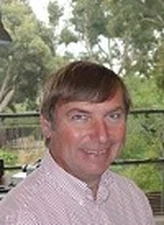Guy Masters

The 2011 Beno Gutenberg Medal is awarded to Guy Masters in recognition of his outstanding contributions in seismic investigations of Earth’s large-scale structure, including in particular the deep mantle and core.
Thomas Guy Masters was born in York, England and obtained his PhD in 1979 at the University of Cambridge, after which he left Europe for the University of California, San Diego, where he has stayed since, and where he is currently the Director of the Institute of Geophysics and Planetary Physics (IGPP) at the Scripps Institution of Oceanography. He is a Fellow of both the AGU and the Royal Society. Masters’ work is characterized by developing innovative seismic analysis techniques and applying them to comprehensive studies of all available data. He has produced a series of ground-breaking results that touch on many different aspects of seismology and deep-Earth structure. In normal mode seismology, Masters was among the first to apply the formal methods of Backus-Gilbert inverse theory to resolve Earth’s deep density structure in the context of possible departures from adiabaticity and chemical homogeneity, showing that the outer core cannot have strong chemical layering and that a significant density jump occurs at the inner core boundary (ICB). This density jump provides an important constraint on the energy released during inner core growth and Masters has continued to refine these estimates throughout his career. He also carried out early studies on attenuation of normal modes and was the first to identify anomalous mode splitting caused by large-scale, degree-two structure in the upper mantle and transition zone. This is now a standard feature of global mantle tomography models, although it pre-dates the first of these models by several years. In the late 1980s and 1990s Masters pioneered the use of long-period body-wave arrival and differential times in global tomography models by applying a cross-correlation method to long-period seismograms. He then integrated these measurements with normal mode and surface-wave data to create one of the most trusted tomography models of the 1990s. He also worked with Peter Shearer to create the first global map of topography on the 660-km discontinuity, identifying depressions in the phase boundary correlated with subduction zones. Masters was among the first to perform joint analyses and inversions of P- and S-wave data, and demonstrated that their arrival times are correlated with different scaling factors for seismic ray paths that bottom at different depths in the mantle. Whereas travel time perturbations from rays limited to the upper mantle can be explained by thermal effects, those that bottom in the lowermost mantle contain anomalously large S-wave travel time variations that cannot be explained by thermal effects alone. This strongly suggests that chemical heterogeneity is present in the lower mantle, an extremely important result that has profound implications for the composition and evolution of the mantle. The anomalous regions just above the core-mantle boundary have strong S-wave velocity perturbations but only weak P-wave velocity variations, again strongly indicating the presence of chemical heterogeneity. Not surprisingly, he has collaborated extensively with geodynamicists to explore the implications of his models for mantle flow. In addition to his research activities, Thomas Guy Masters has served on the executive committees of IRIS, SEDI and CHiPR and on various panels and advisory committees. Many have to be grateful to him for unselfishly sharing his observations and models.
